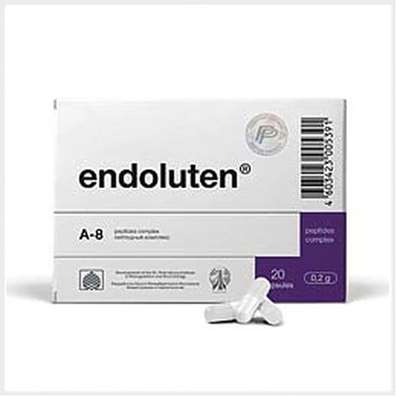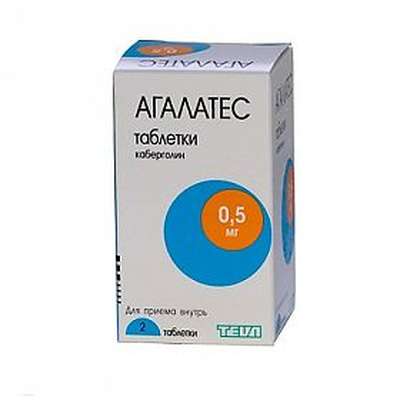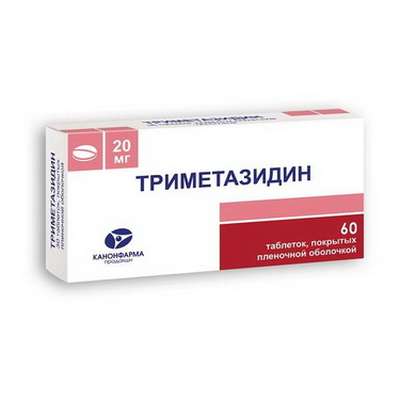Instruction for use: Mirtazonal
I want this, give me price
Dosage form: tablets
Active substance: Mirtazapine*
ATX
N06AX11 Mirtazapin
Pharmacological groups:
Antidepressant
The nosological classification (ICD-10)
F32 Depressive episode: Adynamic subdepression; Astheno-adynamic subdepressive states; Asthenoadressive disorder; Astheno-depressive disorder; Asthenodepressive state; Astheno-depressive state; Major Depressive Disorder; Vyaloapatichesky depression with retardation; Double Depression; Depressive pseudodement; Depressive illness; Depressive mood disorder; Depressive disorder; Depressive mood disorder; Depressive state; Depressive disorders; Depressive syndrome; Depressive syndrome larviated; Depressive syndrome in psychoses; Depressed masks; Depression; Depression Depletion; Depression with the phenomena of inhibition within the framework of cyclothymia; Depression is smiling; Involutional depression; Involutionary melancholy; Involutional depression; Manic-depressive disorder; Masked Depression; Melancholic Attack; Neurotic depression; Neurotic depression; Shallow Depression; Organic depression; Organic depressive syndrome; Simple depression; Simple melancholic syndrome; Psychogenic depression; Reactive depression; Reactive depression with moderate psychopathological symptoms; Reactive depressive states; Reactive depression; Recurrent depression; Seasonal depressive syndrome; Severostatic depression; Senile Depression; Symptomatic Depression; Somatogenic depression; Cyclotymic depression; Exogenous depression; Endogenous depression; Endogenous Depressive Conditions; Endogenous Depression; Endogenous depressive syndrome
F33 Recurrent depressive disorder: Major depressive disorder; Secondary depression; Double Depression; Depressive pseudodement; Depressive mood disorder; Depressive disorder; Depressive mood disorder; Depressive state; Depressive syndrome; Depressed masks; Depression; Depression is smiling; Involutional depression; Involutional depression; Masked Depression; Melancholic Attack; Reactive depression; Reactive depression with moderate psychopathological symptoms; Reactive depressive states; Exogenous depression; Endogenous depression; Endogenous Depressive Conditions; Endogenous Depression; Endogenous depressive syndrome
F51.0 Insomnia of inorganic etiology: Situational insomnia; Situational sleep disorders
F69 Disorder of personality and behavior in adulthood, unspecified: Anhedonia; Anomaly of character; Autism; Pathological character; Pathological personality development; Character disorders; Coprolalia
G47.0 Sleep disturbance and sleep disturbances [insomnia]: Insomnia; Insomnia, especially the difficulty of falling asleep; Desynchronosis; Prolonged sleep disorder; Difficulty falling asleep; Difficulty falling asleep; ; Insomnia; Short-term and transient sleep disorders; Short-term and chronic sleep disorders; Short or shallow sleep; Disturbance of falling asleep; Sleep disturbance, especially in the phase of falling asleep; Sleep disturbances; Sleep Disorders; Neurotic sleep disorder
R46.4 Retardation and delayed reaction: Anergy; Inhibition; Ideal slowing; Motor retardation; Psychomotor retardation;The phenomena of ideomotor inhibition
R63.4 Abnormal weight loss: Depletion
Z91.5 In a personal anamnesis of self-harm: Suicidal thoughts
Composition and release form
Tablets for absorption 1 table.
mirtazapine 15 mg; 30 mg; 45 mg
auxiliary substances: mannitol DC (Pearl 200); ICC (Avicel PH 102); magnesium carbonate; giprolose with a low degree of substitution (L-HPC, LH-11); crospovidone (Polyplasdone L-10); tsiamopsis four-bladed (Guara) gum (Avicel CE-15); silicon dioxide colloid (Aerosil 200); L-methionine; aspartame; flavoring orange Silesia 1209603133; magnesium stearate
in a 6-strip; in a pack of cardboard 5 strips.
Tablets covered with a film membrane 1 tab.
mirtazapine 15 mg; 30 mg; 45 mg
auxiliary substances: lactose monohydrate; starch corn pregelatinized (starch 1500); silicon dioxide; sodium croscarmellose; magnesium stearate;
Opadry 03F22322 yellow: hypromellose 6cP; titanium dioxide; macrogol / PEG 8000; iron oxide is yellow; iron oxide red;
Opadry 03F23252 orange: hypromellose 6cP; titanium dioxide; macrogol / PEG 8000; iron oxide is yellow; iron oxide red;
Opadry 03F28635 white: hypromellose 6cP; titanium dioxide; Macrogol / PEG 8000
in a blister of 10 pcs .; in a pack of cardboard 3 blisters.
Description of dosage form
Dissolving tablets: round biconvex tablets white or almost white with the smell of orange, labeled "M1" (tablets 15 mg), "M2" (tablets 30 mg) or "M4" (tablets 45 mg).
Tablets, film-coated:
tablets 15 mg - oval biconvex, film-coated tablets brownish-yellow with a risk on both sides and labeled "I" on the one hand;
tablets 30 mg - oval biconvex, film-coated tablets of pink-brown color with a risk on both sides and labeling "I" on the one hand;
pills 45 mg - oval biconvex, film-coated tablets of white color with the label "I" on one side.
Pharmachologic effect
Pharmacological action - antidepressant.
Strengthens the central adrenergic and serotonergic transmission. It blocks 5-HT2 and 5-HT3-serotonin receptors, and therefore, the enhancement of serotonergic transmission is realized only through 5-HT1 receptors. Both spatial enantiomers participate in the manifestation of antidepressant activity: the S (+) enantiomer blocks pre- and postsynaptic alpha2-adreno and 5-HT2-serotonin receptors, R (-) enantiomer-5-HT3-serotonin receptors. It blocks H1-histamine receptors, has a sedative effect. In therapeutic doses, it has almost no anticholinergic effect and does not affect the cardiovascular system. In clinical conditions anxiolytic and hypnotic properties are also manifested, therefore, mirtazapine is most effective in anxiety depressions of different genesis. Thanks to a moderate sedative effect during the treatment, suicidal thoughts are not actualized. Antidepressant effect is manifested after 1-2 weeks of treatment.
Pharmacokinetics
Absorption is high, bioavailability is 50%. Tmax - 2 hours. The equilibrium state with the appointment of doses in the range of 15-80 mg is achieved after 3-5 days. Binding to plasma proteins - 85%. In the recommended dosage range, the pharmacokinetic parameters of mirtazapine are linearly dependent on the administered dose of the drug. Eating does not affect the pharmacokinetics of the drug. It is actively metabolized by demethylation, oxidation, hydroxylation followed by conjugation with glucuronic acid and the formation of active metabolites. It is excreted by the kidneys (75% of the dose) and through the intestine (15%). T1 / 2 - 20-40-65 h (in young people shorter than in the elderly), in men - 24 h, in women - 37 h. R (-) - enantiomer is deduced 2 times slower. Clearance decreases with renal or hepatic insufficiency.
Indication of Mirtazonal
Depressive conditions (including anhedonia, psychomotor retardation, insomnia, early awakening, weight loss, loss of interest in life, suicidal thoughts and mood lability).
Contraindications
hypersensitivity to mirtazapine or other components of the drug;
simultaneous administration with MAO inhibitors;
age to 18 years (efficacy and safety not established).
Carefully:
hypertrophy of the prostate;
acute closed angle glaucoma, increased intraocular pressure;
diabetes;
hepatic and / or renal insufficiency;
epilepsy;
organic brain damage;
heart disease (conduction disorders, angina pectoris or recent myocardial infarction), ciliary tachyarrhythmia;
cerebrovascular diseases (including ischemic attacks in the anamnesis);
arterial hypotension and conditions predisposing to hypotension (including dehydration and hypovolemia);
acute myocardial infarction;
drug dependence and propensity to abuse of psychoactive drugs (in history);
mania, hypomania.
Application in pregnancy and lactation
Safety of the use of the drug Mirtazonal in pregnancy is not established, so it can be used during pregnancy only if the benefit to the mother exceeds the potential risk to the fetus and under the supervision of the doctor.
The use of the drug during lactation and breast-feeding is not recommended (there is no data on excretion of the drug with breast milk).
Side effects
From the side of the nervous system: drowsiness, impaired concentration, is more common in the first weeks of treatment (lowering the dose usually does not lead to a decrease in sedation, but can reduce the antidepressant effect), psychomotor retardation, seizures, tremor, myoclonus, hyperkinesia, hypokinesia, mood changes and mentality, agitation, anxiety, apathy, hallucinations, depersonalization, emotional lability, hostility, mania, epileptic seizures, dizziness, vertigo, hyperesthesia, nightmares / I Kie dreams.
From the hematopoiesis: oppression hemopoiesis - granulocytopenia, agranulocytosis, neutropenia, eosinophilia, aplastic anemia, thrombocytopenia.
On the part of the digestive system: nausea, vomiting, constipation, increased appetite, weight gain, dry mouth, thirst, abdominal pain, increased activity of hepatic transaminases.
On the part of the genitourinary system: a decrease in potency, dysmenorrhea.
From the cardiovascular system: a decrease in blood pressure, orthostatic hypotension.
Allergic reactions: urticaria.
Other: flu-like syndrome, suffocation, edematous syndrome, myalgia, back pain, dysuria, drug dependence, withdrawal syndrome.
Interaction
Strengthens the inhibitory effect of ethanol on the central nervous system and the sedative effect of anxiolytics of the benzodiazepine structure. Do not use simultaneously with MAO inhibitors and within 2 weeks after their withdrawal. Inductors or inhibitors of metabolic enzymes can alter the concentration of mirtazapine in the blood. Myelotoxic drugs increase the manifestation of hematotoxicity of the drug.
The dose of mirtazapine may be reduced with the onset of concomitant treatment with cimetidine or increased when cimetidine treatment is completed.
Dosing and Administration
Inside, not liquid, before going to bed.
Tablets for resorption: the initial dose is 15 mg / day, with a gradual increase to 45 mg / day. The course of treatment - 4-6 months (until the disappearance of clinical symptoms). If the effect of therapy is not observed within 6-8 weeks of treatment, treatment should be discontinued.
The film-coated tablets: for adults (including the elderly), the initial dose is 15 mg / day, after 4 days, the dose may be increased to 30 mg / day, after 10 days, in the absence of effect, up to 45 mg / day
With renal and hepatic insufficiency, the daily dose should be reduced by about 1/3.
The daily dose should be taken for 1 reception, at night. It is also possible to take fractional doses evenly distributed throughout the day. The course of treatment is 4-6 months. Treatment is canceled gradually.
Overdose
Symptoms: retardation, drowsiness, disorientation, tachycardia, hallucinations, moderate increase or decrease in blood pressure.
Treatment: gastric lavage, activated charcoal, oxygenation and ventilation of the lungs, symptomatic therapy.
Special instructions
In patients with schizophrenia, psychotic symptoms may increase. In the treatment of the depressive phase of bipolar affective psychosis, an affect inversion with the development of mania can be observed. Given the possibility of suicidal tendencies, the patient should be given only a small number of tablets. Women of reproductive age should be treated only if reliable contraception is used. Abrupt cancellation after prolonged use can lead to nausea, headache and general deterioration of well-being. When jaundice, symptoms of infectious diseases or a change in the picture of blood, mirtazapine should be discontinued. During the treatment period, it is necessary to avoid the performance of potentially dangerous activities requiring high speed of psychomotor reactions, such as driving a car or controlling mechanisms.
Storage conditions for Mirtazonal
At a temperature of no higher than 25 ° C.
Keep out of the reach of children.
Shelf life of Mirtazonal
tablets, film-coated 15 mg - 3 years.
tablets, film-coated 30 mg - 3 years.
tablets, film-coated 45 mg - 3 years.
tablets for resorption 15 mg - 2 years.
tablets for resorption of 30 mg - 2 years.
tablets for resorption of 45 mg - 2 years.
Do not use after the expiry date printed on the package.

 Cart
Cart





